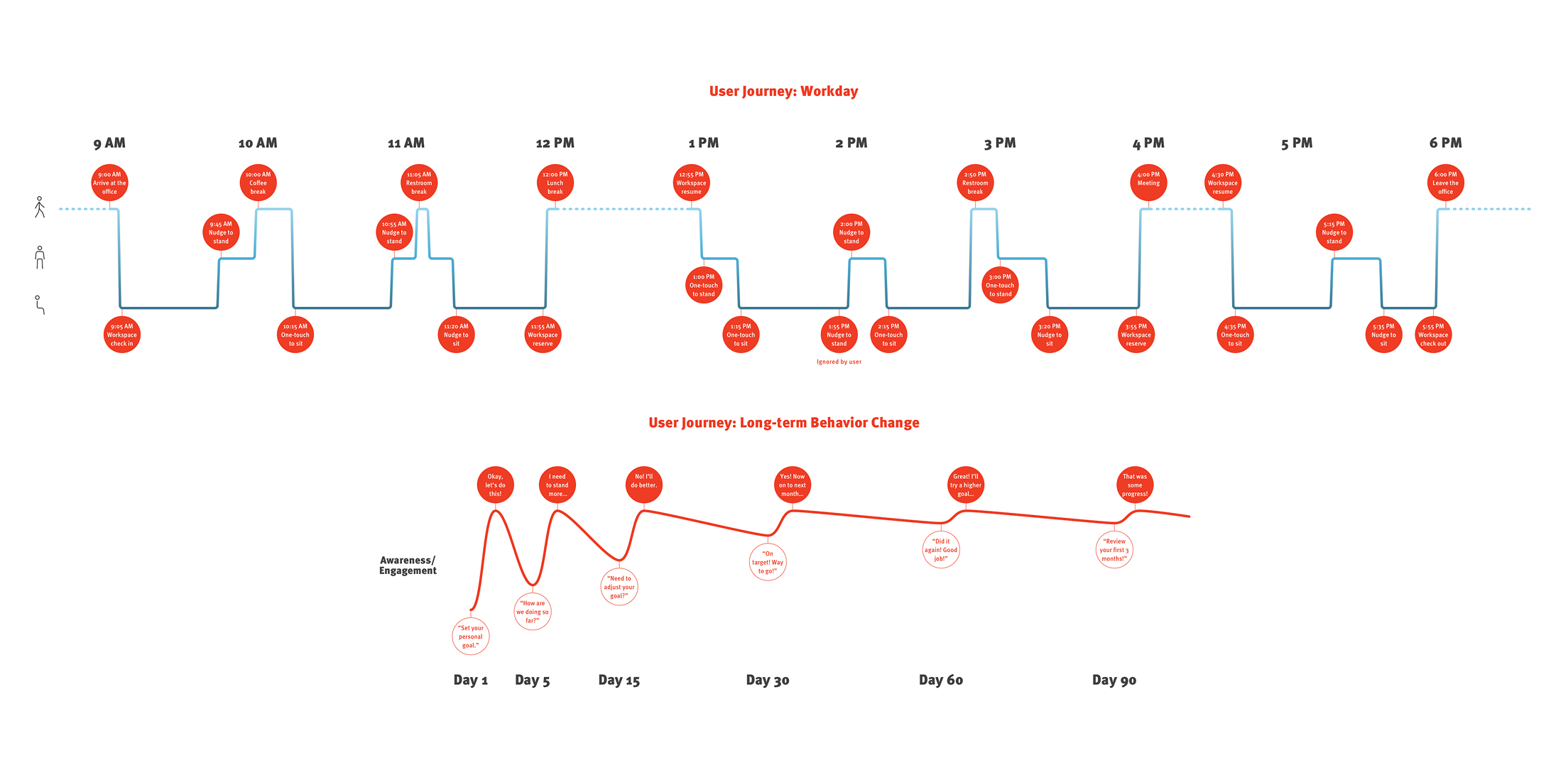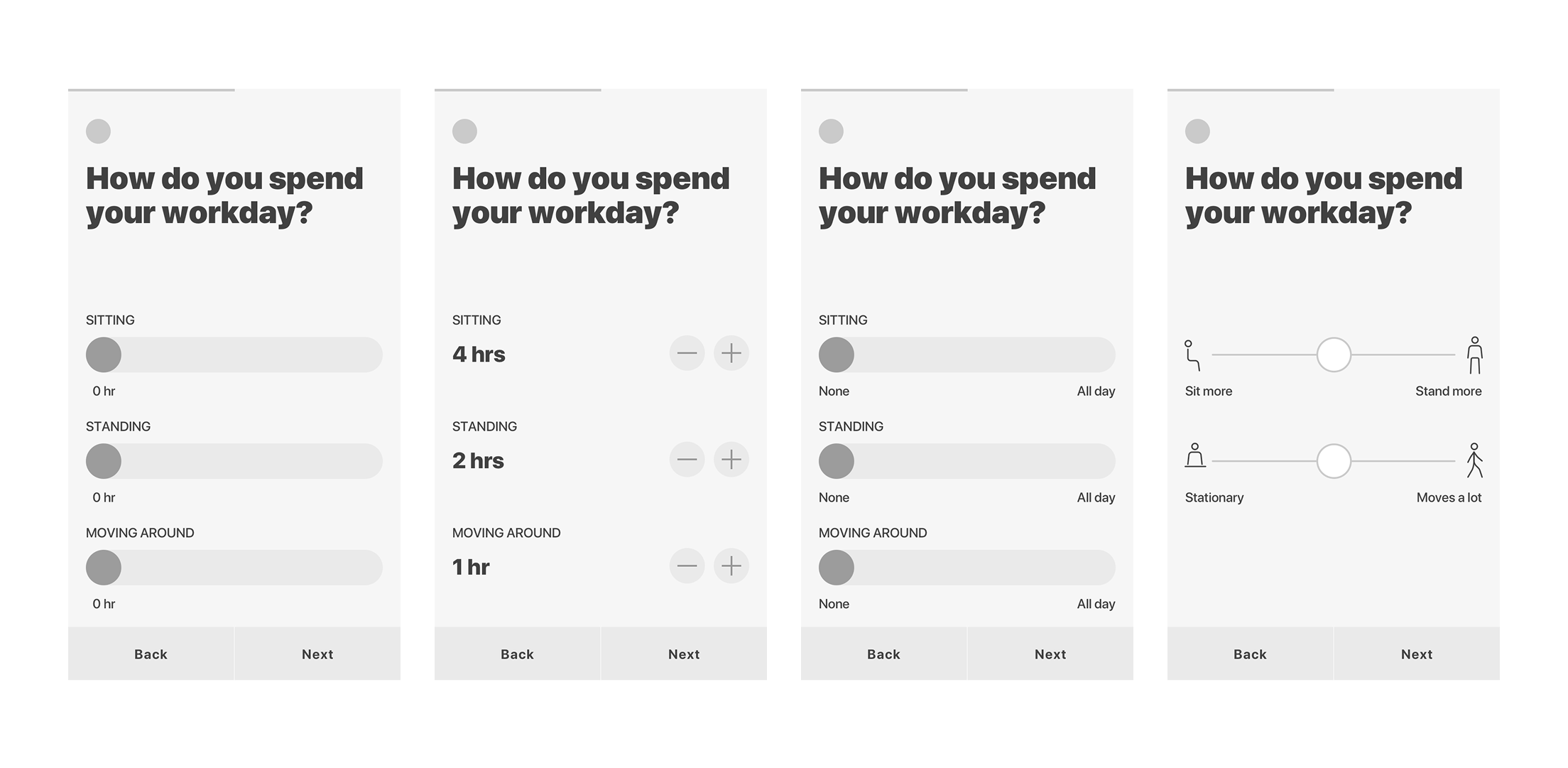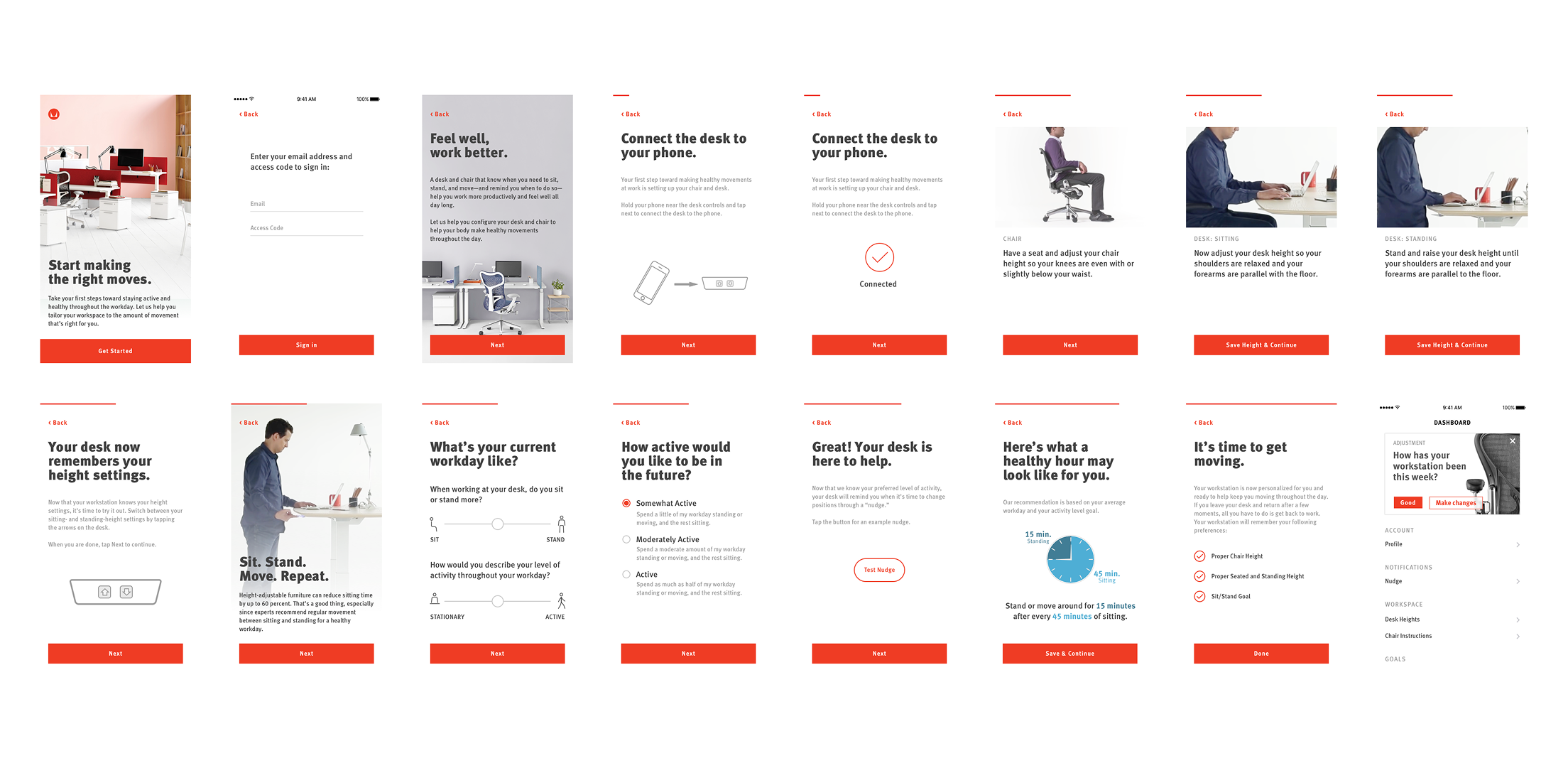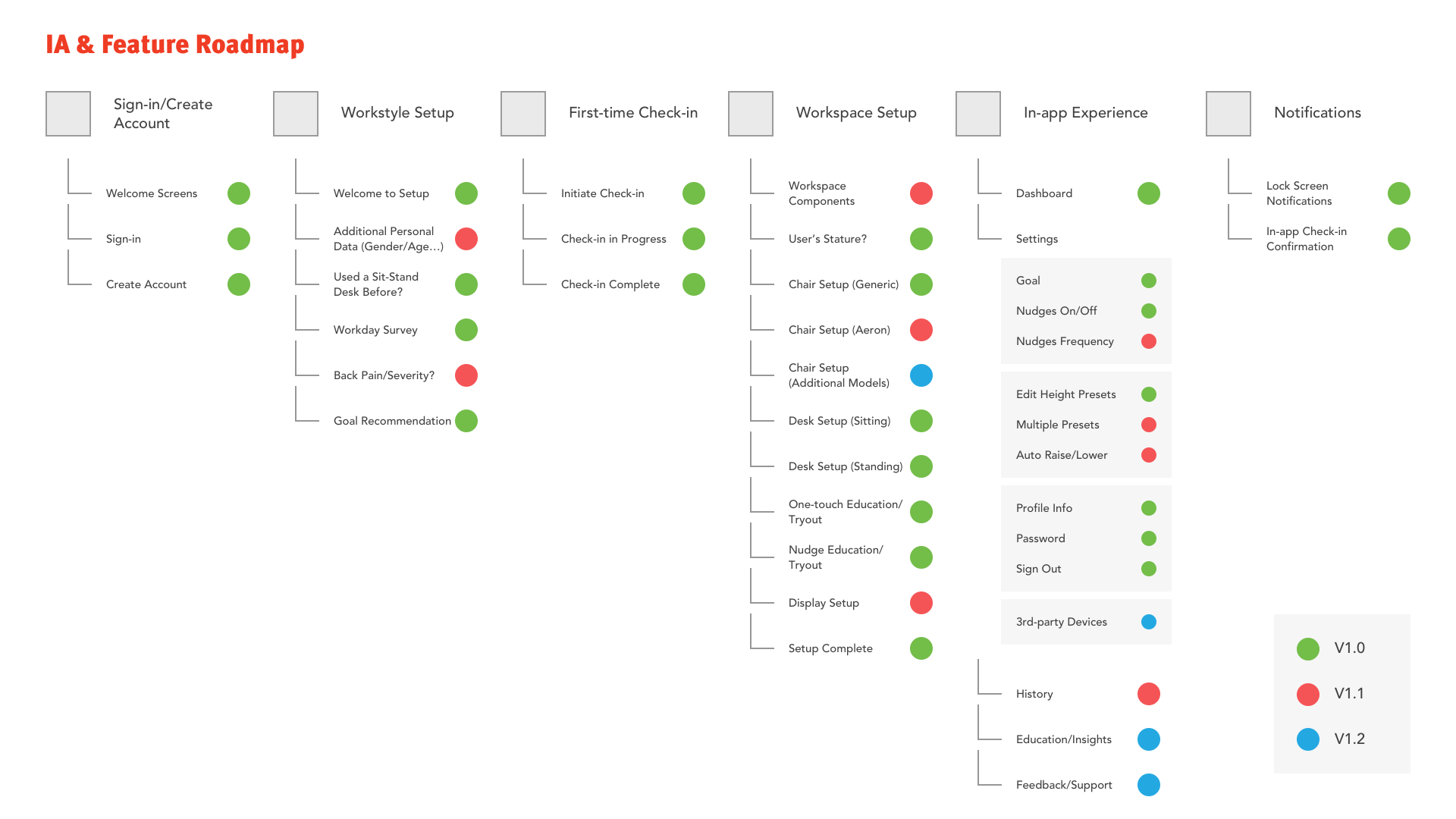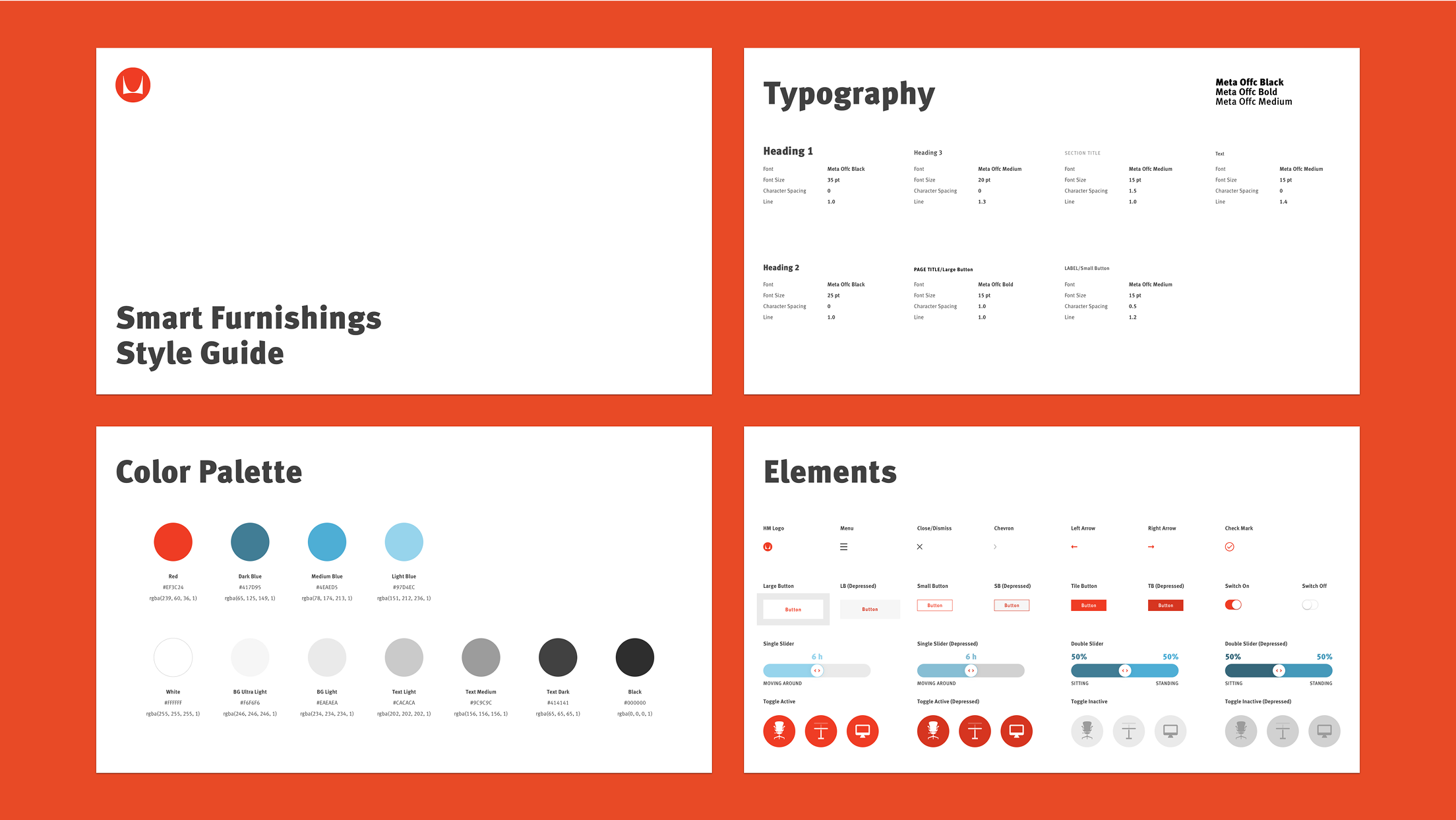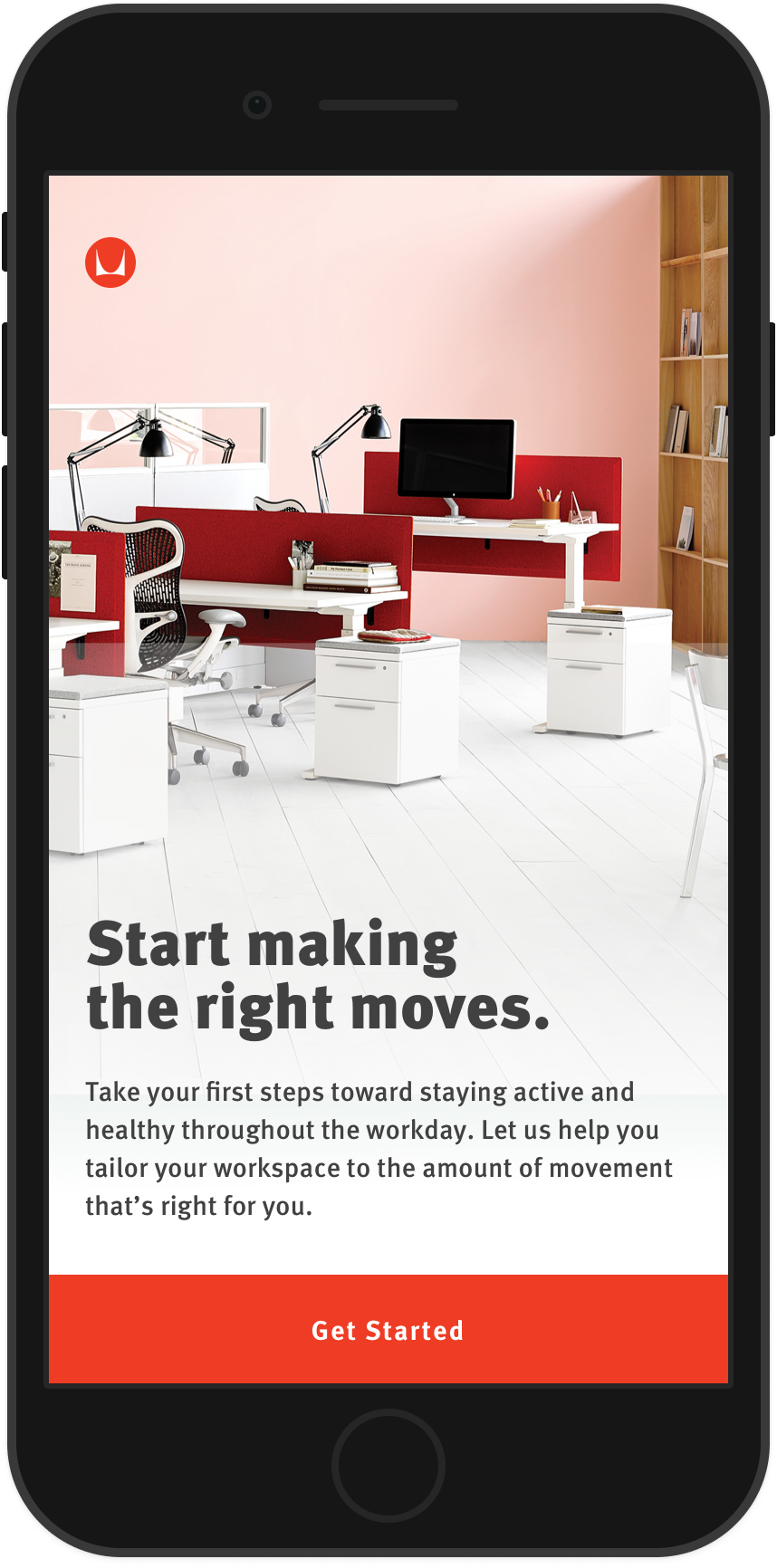
Living Office App
Do you have a sit-to-stand desk at your workplace? If so, how often do you switch between sitting and standing during a workday?
Herman Miller asked that question and discovered that most people never adjust the height of their desk — essentially using it as a regular desk or (less commonly) a standing one.
This is bad for employees because they’re missing out on the health benefits of sit-to-stand desks. It’s also bad for the employers — Herman Miller’s customers — because they have invested a lot in office furniture that’s underutilized.
What if your sit-to-stand desk reminds you when it’s time to stand (or sit down) throughout the day?
Setting up your desk
The Living Office app connects to your desk and syncs your height settings. This is handy when you’re using a hoteling desk — no need to set it up again.
When you open the app for the first time, it guides you through setting up your sitting and standing heights ergonomically. Then it asks you a few questions about your activity level at work before recommending a healthy interval of switching between sitting and standing.
Your desk will remind you when it’s time to change postures via gentle vibrations and light signals. You can track your progress in the app.
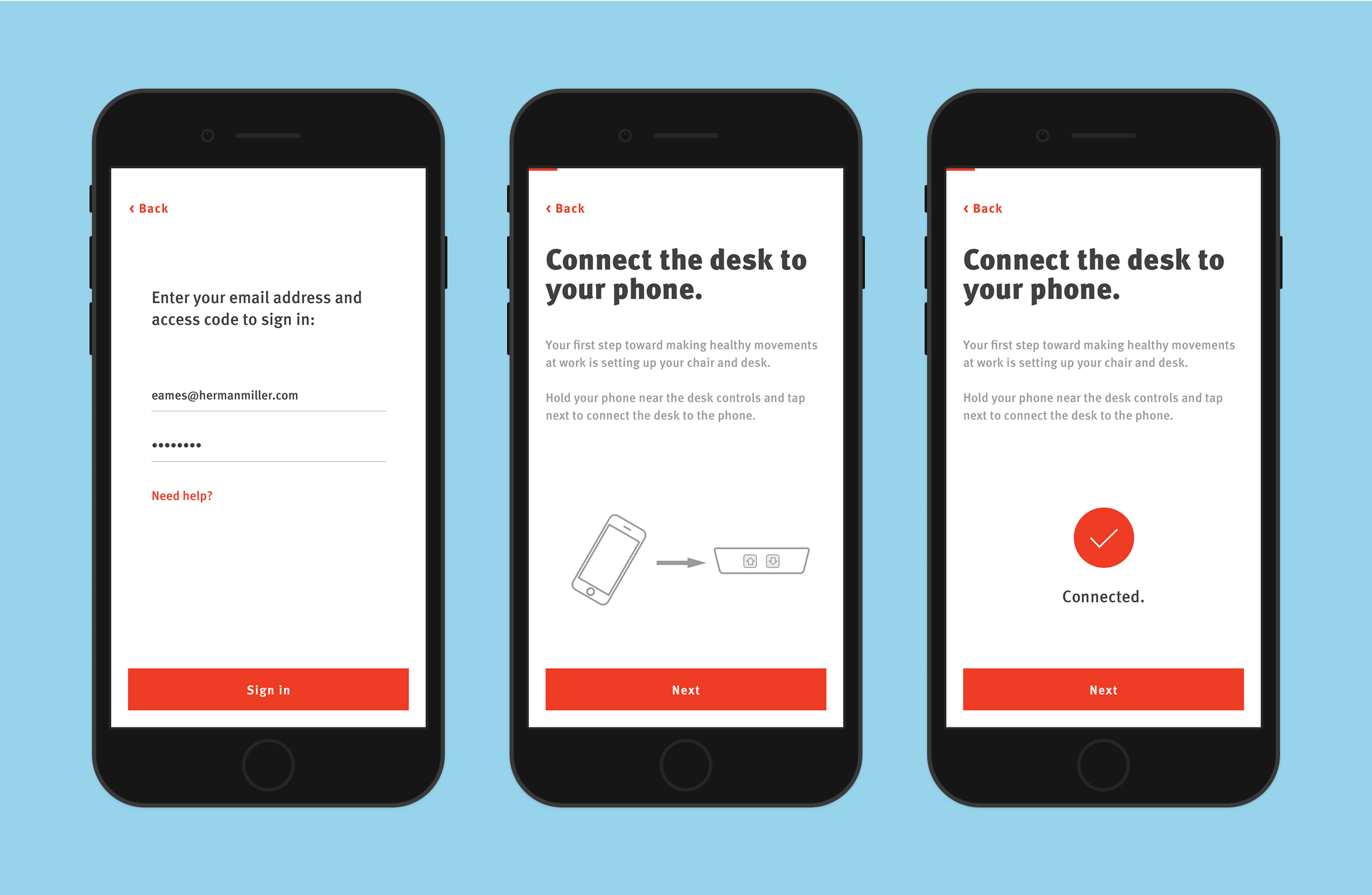
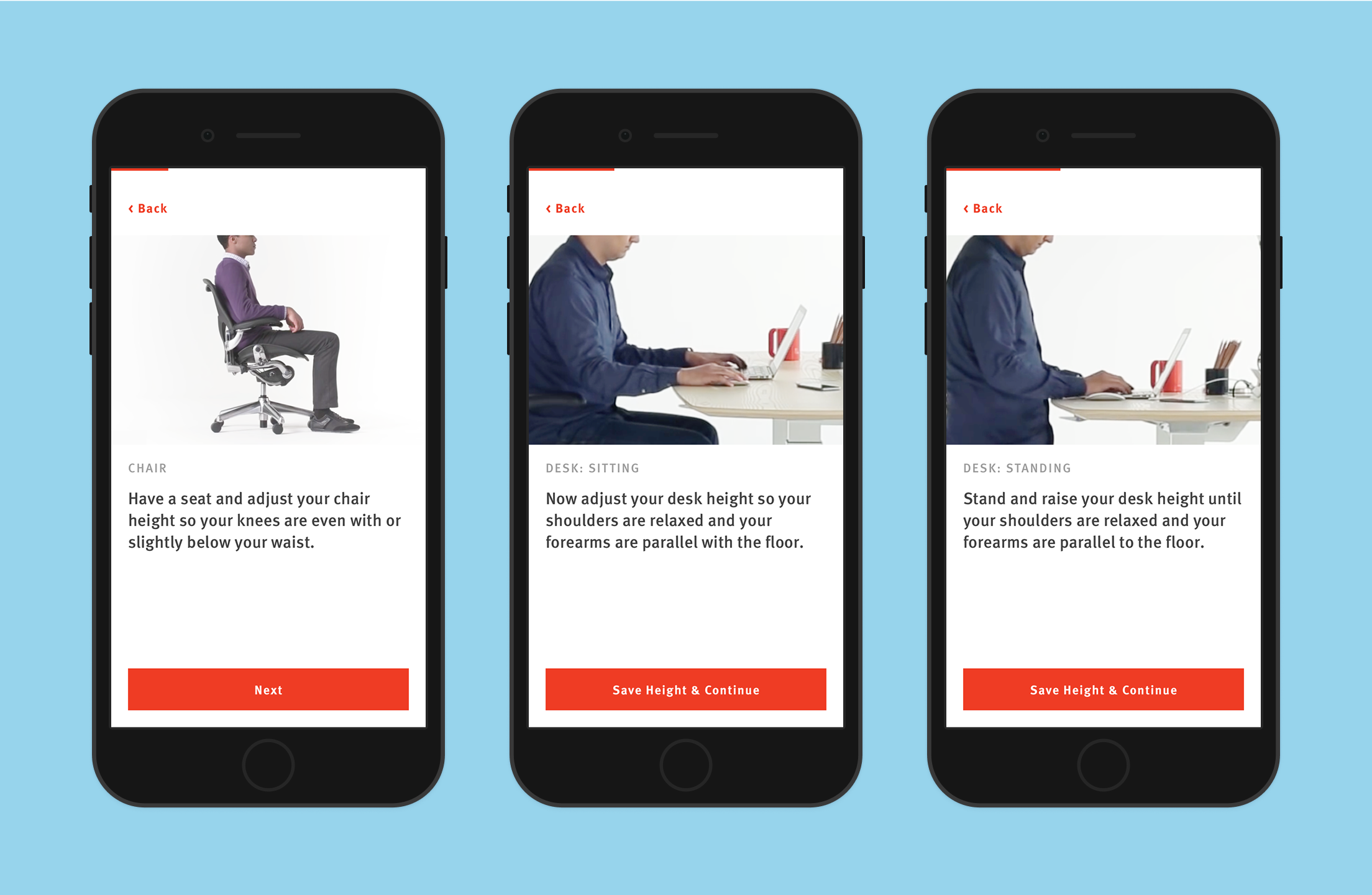
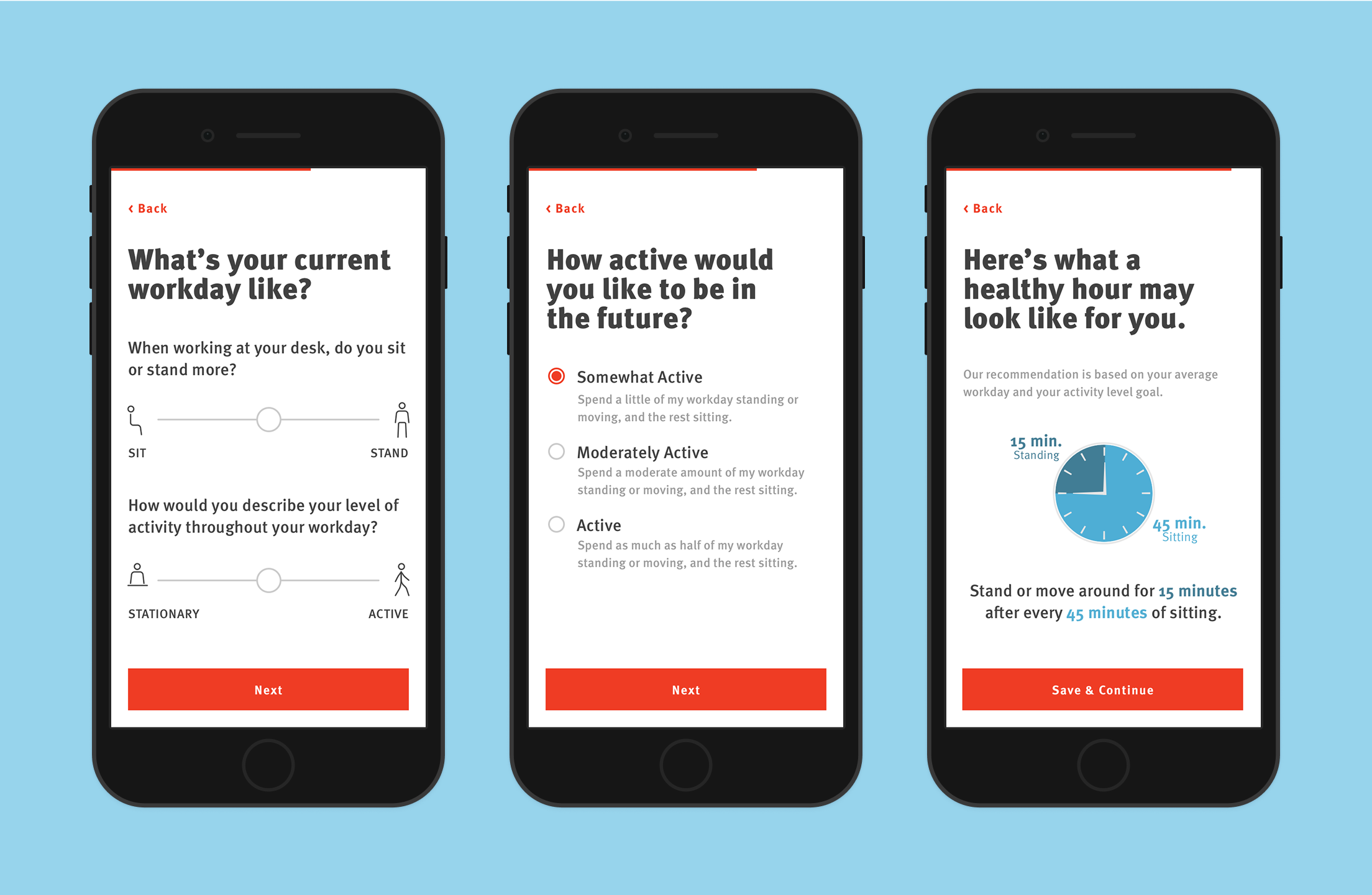
What’s a good goal?
Either sitting or standing for long periods of time is bad; the key is to keep people moving between postures and to help them form a habit of doing so throughout the day.
We worked with ergonomic experts from Herman Miller to come up with activity goals that are healthy and practical.
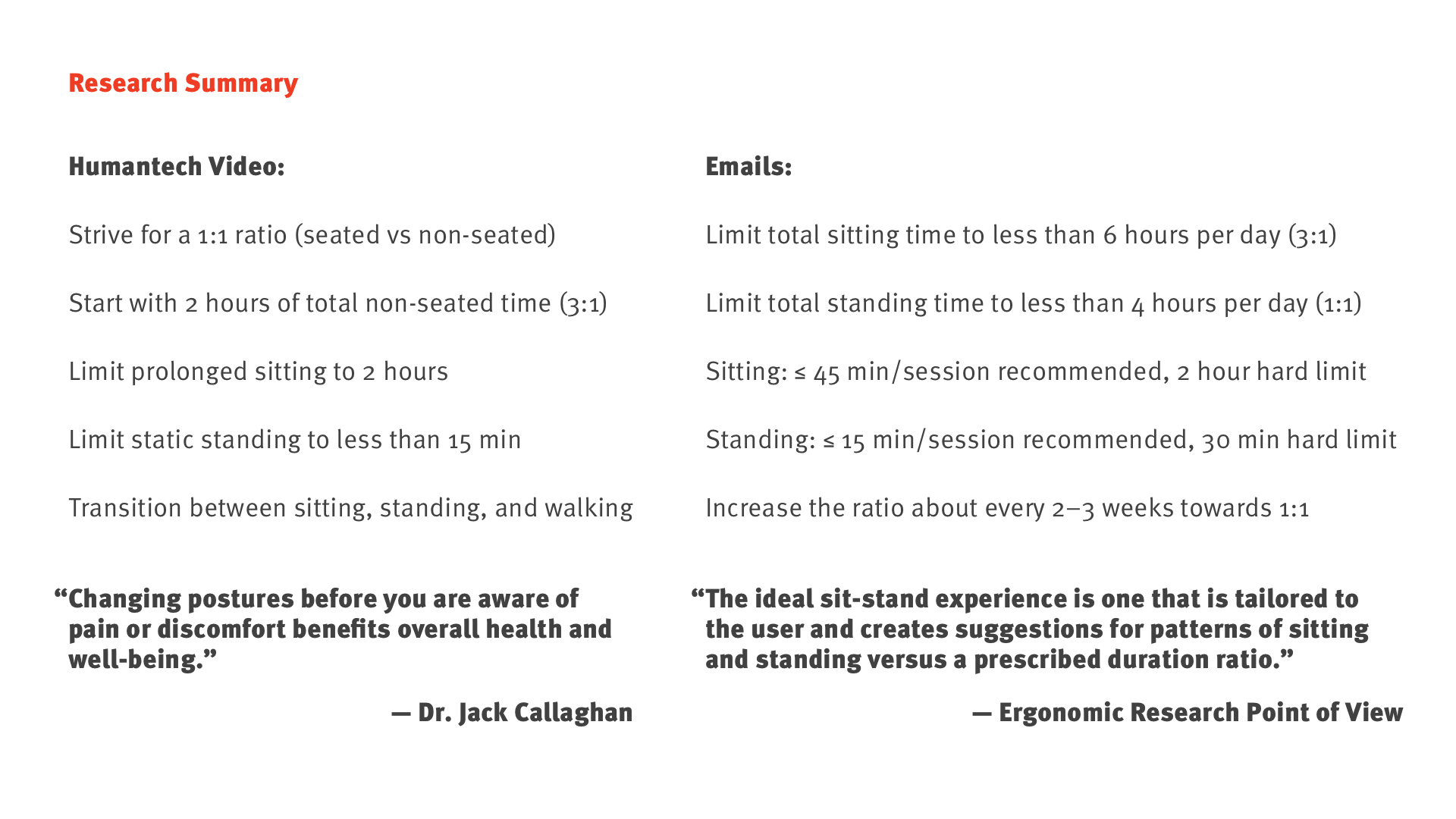
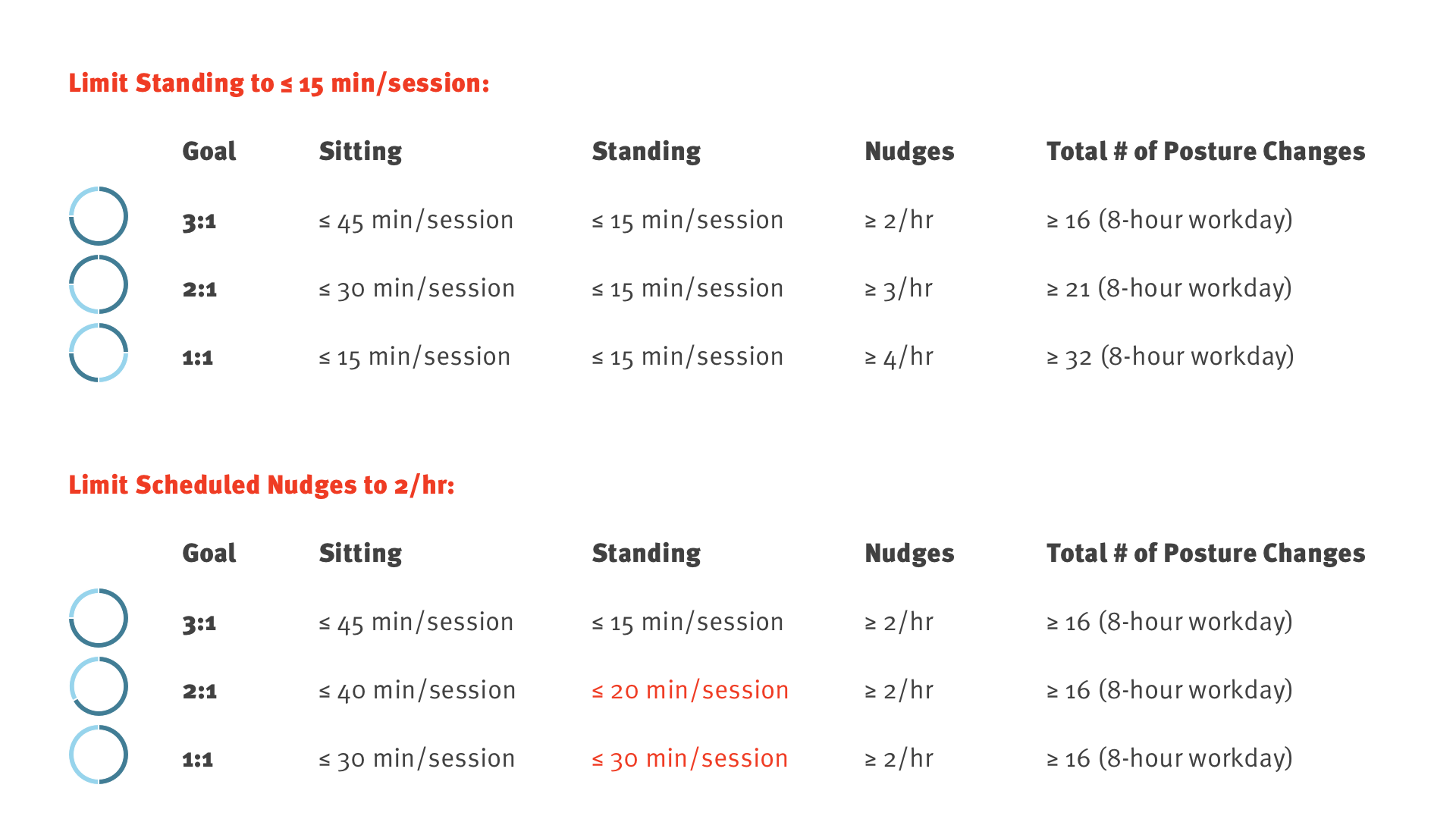
Usability testing
We invited people outside our office to test a prototype of the app. We used a sit-to-stand desk from the office to simulate what the Herman Miller furniture would do.
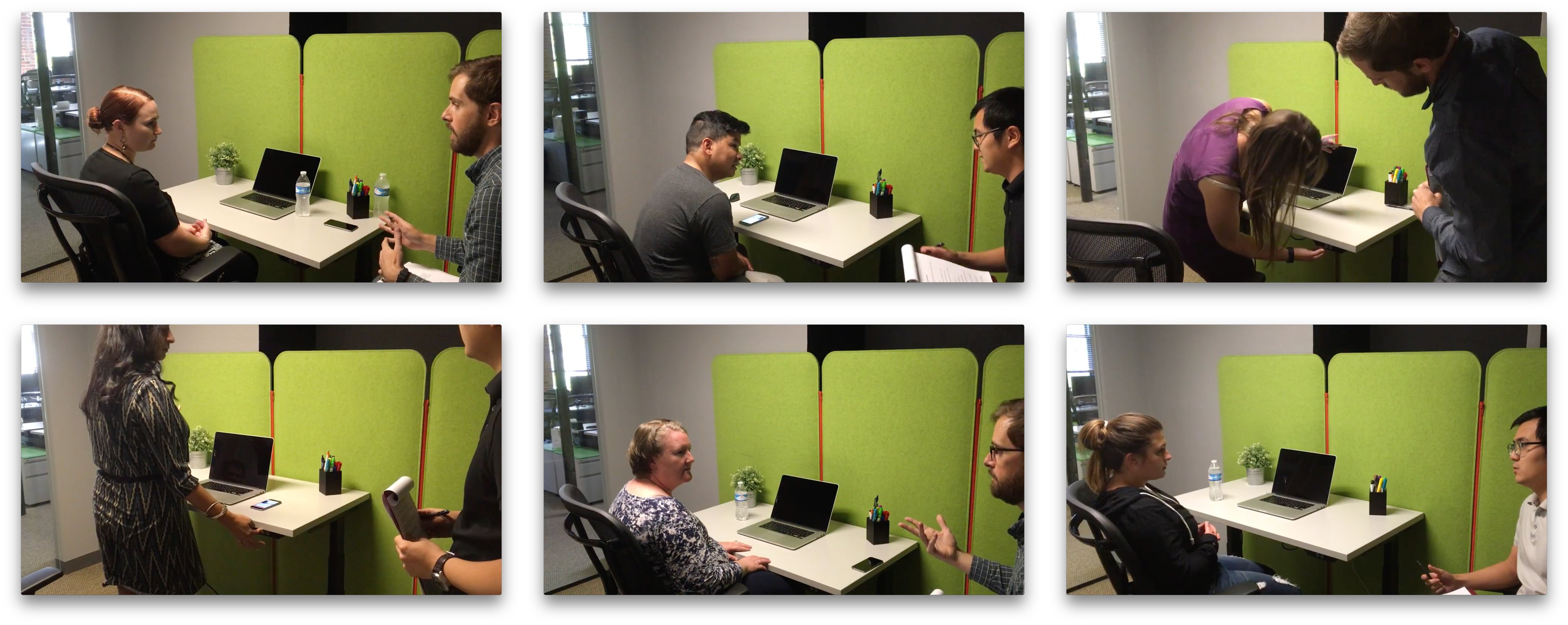
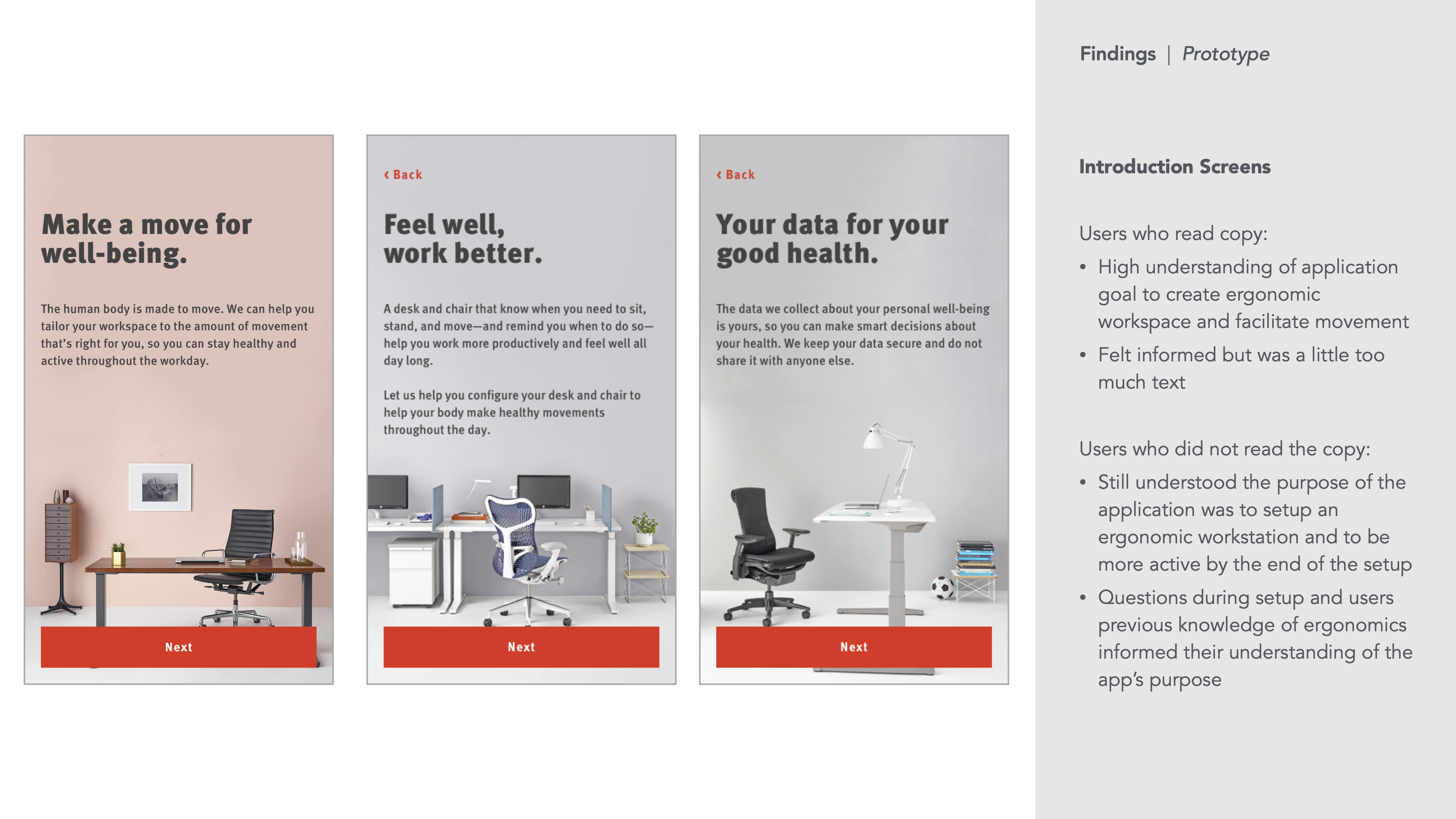
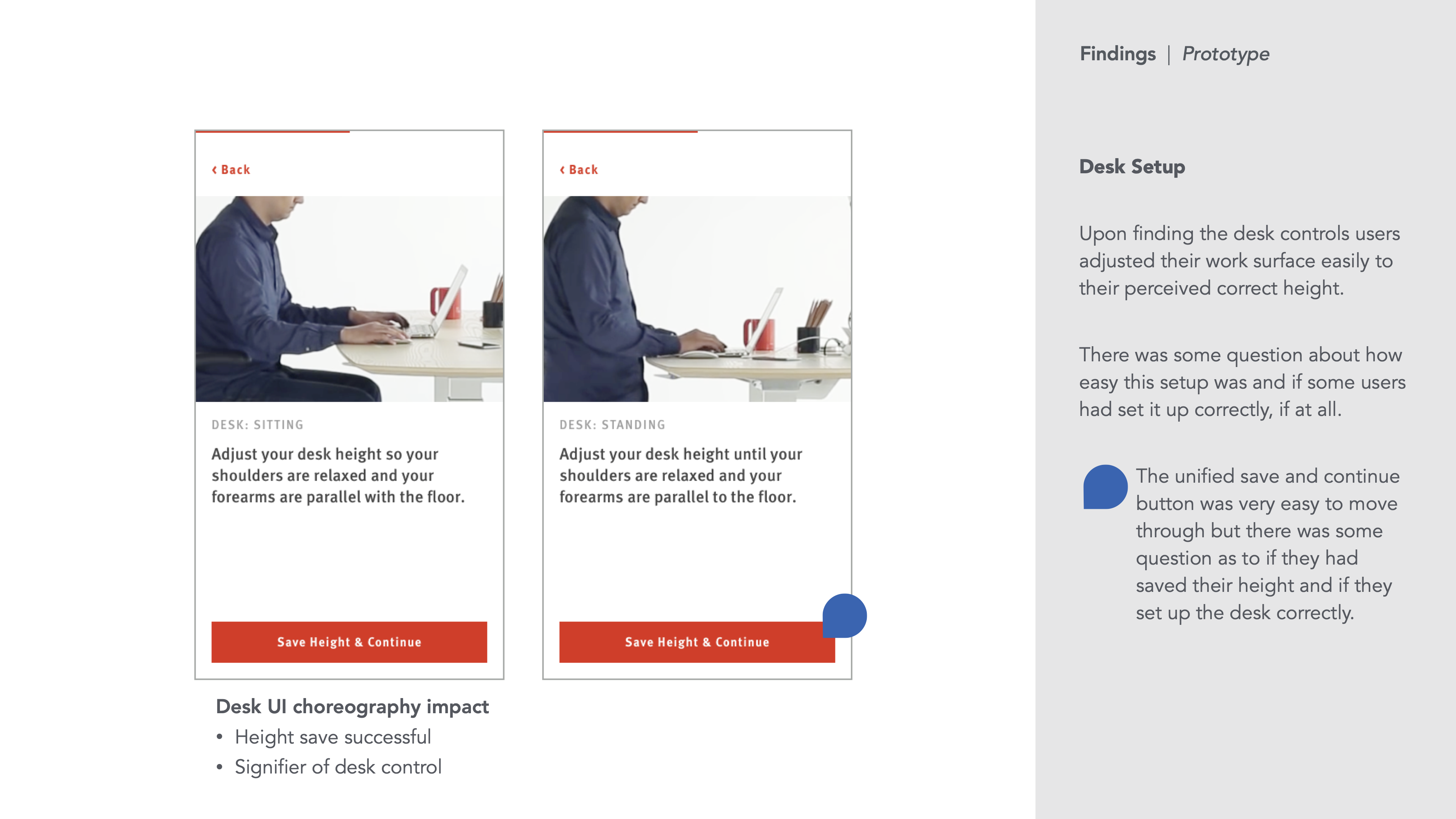
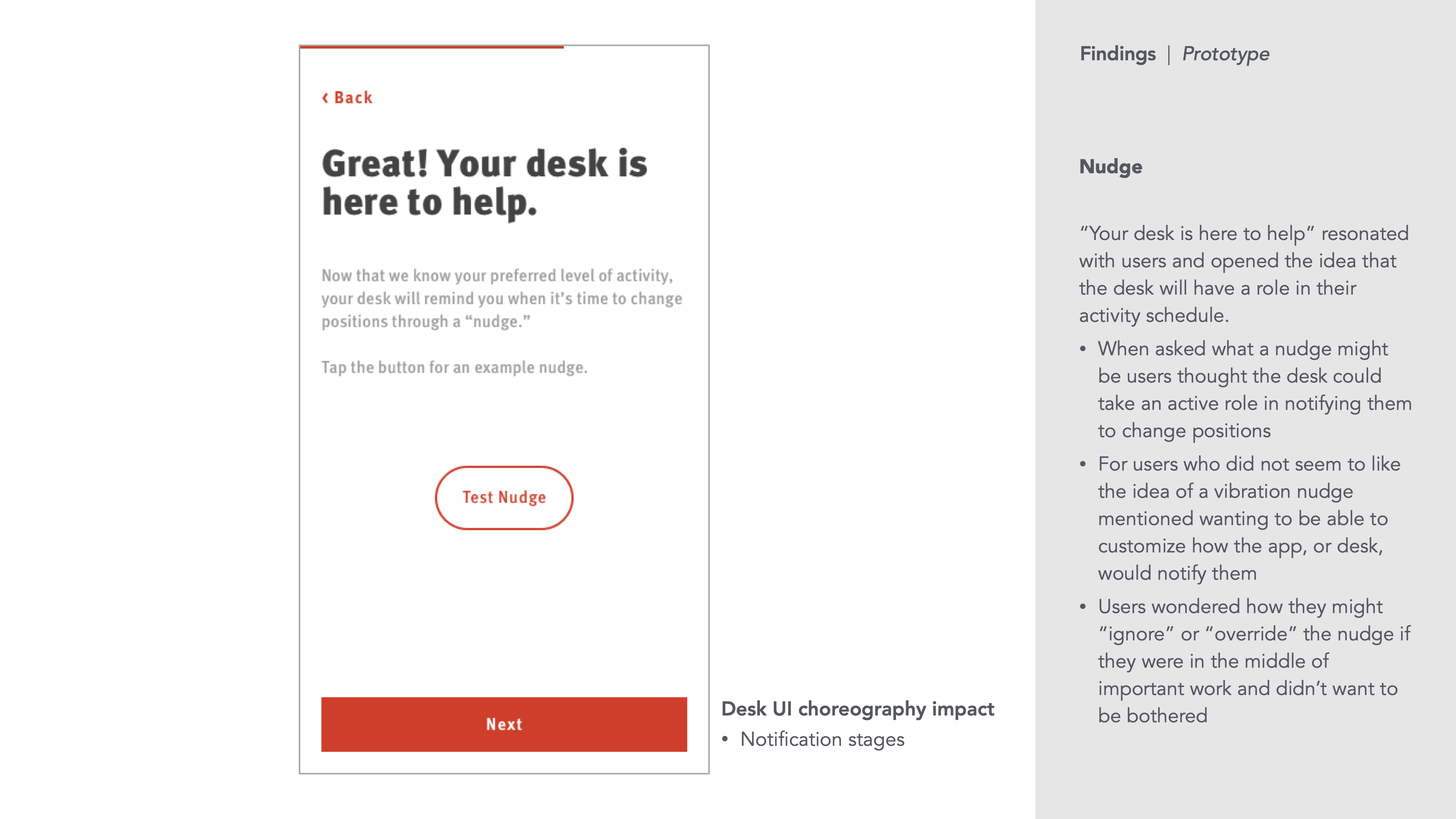
Project artifacts
